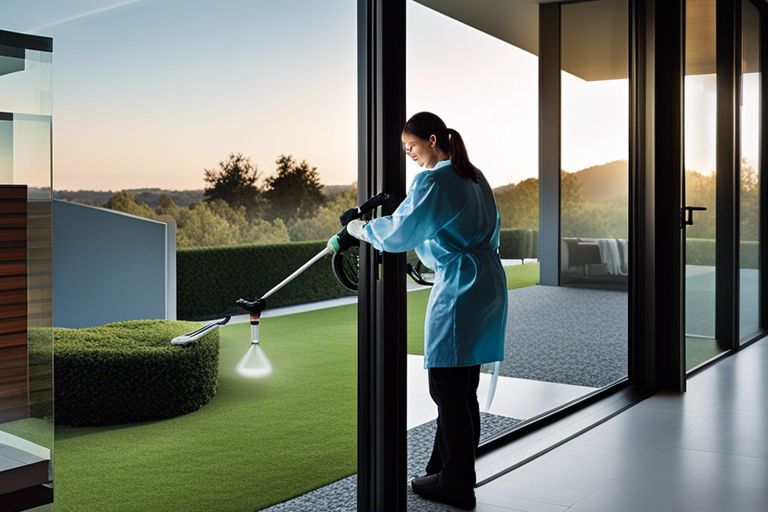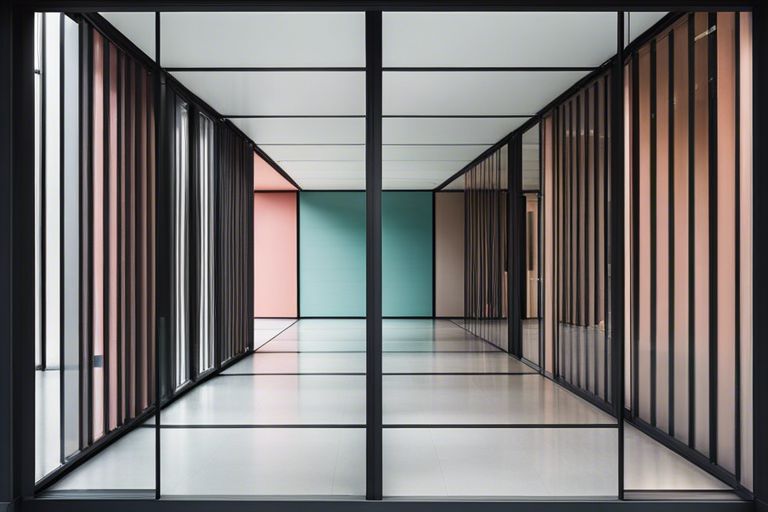In modern homes, flat rooflights are becoming increasingly popular due to their ability to bring natural light into living spaces. When integrated with smart home technology, flat rooflights can offer a range of benefits for homeowners. From automated opening and closing to energy-efficient sensors that adjust light levels, the possibilities are endless. However, it is crucial to ensure that security measures are in place to prevent potential risks associated with remote access to rooflights. By exploring the intersection of smart home integration with flat rooflights, homeowners can create a more efficient, secure, and comfortable living environment.
Key Takeaways:
- Enhanced Integration: Smart home technology can seamlessly integrate with flat rooflights to enhance automation and control.
- Improved Efficiency: Integration allows for better energy management, enhanced security features, and increased comfort levels within the home.
- Convenience and Flexibility: Users can enjoy the convenience of controlling their rooflights remotely, adjusting lighting levels, and monitoring their home from anywhere.
Understanding Flat Rooflights
Definition and Design Elements
Flat rooflights are sleek, modern lighting solutions that are installed on flat roofs to allow natural light to flood into the space below. They are typically made of high-quality glass or polycarbonate materials, designed to be durable and long-lasting. The design of flat rooflights is minimalistic yet elegant, adding a touch of sophistication to any home.
These rooflights are available in various shapes and sizes, allowing homeowners to customise them according to their specific requirements. They can be integrated seamlessly into the roof, creating a smooth and uninterrupted surface that enhances the overall aesthetics of the property.
Benefits of Flat Rooflights in Home Architecture
One of the key benefits of incorporating flat rooflights into home architecture is the increase in natural light. By allowing sunlight to penetrate deep into the living space, flat rooflights create a brighter and more inviting environment. This not only improves the overall ambiance of the home but also reduces the need for artificial lighting during the day, leading to energy savings.
In addition to the aesthetic appeal, flat rooflights also contribute to better ventilation and air quality within the property. They can be opened to allow for fresh air circulation, creating a healthier indoor environment. This feature is particularly beneficial in bathrooms and kitchens where moisture levels tend to be higher, helping to prevent issues such as mould and mildew.
Overall, the incorporation of flat rooflights in home architecture brings a myriad of benefits, from enhancing natural light to improving air circulation and energy efficiency. Their modern design and practical functionality make them a valuable addition to any property looking to elevate its living experience.

Integration Techniques
When it comes to integrating flat rooflights into a smart home system, there are various techniques to consider. From compatibility with existing smart home systems to advanced control options, the possibilities are endless.
Compatibility with Smart Home Systems
Flat rooflights can easily be integrated with popular smart home systems such as Amazon Alexa, Google Home, and Apple HomeKit. This allows users to control their rooflights through voice commands or smartphone applications, providing convenience and flexibility.
Moreover, some flat rooflight manufacturers offer their own dedicated apps that seamlessly integrate with these smart home systems, providing a user-friendly experience.
Advanced Control Options for Flat Rooflights
For those looking for more advanced control options, flat rooflights can be equipped with features such as built-in sensors for automatic opening and closing based on weather conditions. Additionally, timers and scheduling capabilities allow users to set specific times for their rooflights to open or close, enhancing energy efficiency and security.
Furthermore, some flat rooflights offer compatibility with smart blinds or curtains, allowing users to control both natural light and privacy levels with just a few taps on their smartphone.
| Key Features | Benefits |
| Automatic Opening/Closing Sensors | Enhanced convenience and energy efficiency |
| Timers and Scheduling Capabilities | Customisable control for specific preferences |
| Compatibility with Smart Blinds/Curtains | Complete control over natural light and privacy |

Technical Considerations
Installation Requirements
When integrating flat rooflights into a smart home system, there are certain installation requirements that need to be considered. It is crucial to ensure that the rooflights are installed by a professional to guarantee proper fitting and sealing. Additionally, the surrounding roof structure should be assessed to ensure it can support the weight of the rooflights.
Weatherproofing is essential when it comes to flat rooflights, as they are directly exposed to the elements. Proper flashing and sealing are necessary to prevent water leakage and ensure the longevity of the rooflights. The correct integration of the rooflights with the roofing material is crucial to maintain the structural integrity of the roof.
Energy Efficiency and Environmental Impact
Consideration should be given to the energy efficiency and environmental impact of integrating flat rooflights into a smart home. Rooflights can help to reduce the reliance on artificial lighting during the day, thus lowering energy consumption. Additionally, they can contribute to the overall thermal performance of the building, helping to reduce heating and cooling costs.
In terms of environmental impact, choosing energy-efficient glazing for the rooflights can further enhance their performance. Low-emissivity coatings and insulated glazing units can help to improve thermal efficiency, reducing heat loss and minimising carbon emissions.

Maintenance and Troubleshooting
Routine Maintenance Tips
When it comes to keeping your flat rooflights in top condition, routine maintenance is key. Firstly, regularly clean the glass panels to ensure maximum light intake. Use a non-abrasive cleaner and a soft cloth to prevent scratches. Secondly, check the seals around the rooflights for any signs of damage or wear and tear. Replace any damaged seals promptly to prevent leaks. Lastly, ensure that the drainage system is clear of any debris to prevent water pooling on the rooflight.
- Clean the glass panels regularly
- Check the seals for any signs of damage
- Clear the drainage system of any debris
Assume that regular maintenance will prolong the lifespan of your flat rooflights and prevent costly repairs in the future.
Troubleshooting Common Issues
Despite regular maintenance, flat rooflights may encounter common issues that require troubleshooting. If you notice water leaks around the seals, it could indicate a sealant failure. In this case, reseal the affected area immediately to prevent further water damage. Additionally, if the rooflights are condensating excessively on the inside, it may be due to poor ventilation. Ensure that the room is adequately ventilated to reduce condensation.
- Water leaks may indicate a sealant failure
- Excessive condensation could be due to poor ventilation
Be mindful of, addressing common issues promptly will prevent further damage and maintain the efficiency of your flat rooflights.
Smart Home Integration with Flat Rooflights
Flat rooflights offer a modern touch to any home, but when integrated with smart home technology, they elevate the living experience to a whole new level. By connecting rooflights to a smart home system, homeowners can control the amount of natural light entering their space, adjust ventilation, and even monitor energy efficiency. This integration not only adds convenience but also enhances security by allowing remote monitoring and control of the rooflights. With the seamless integration of flat rooflights into a smart home setup, homeowners can enjoy a more comfortable, energy-efficient, and secure living environment.
FAQ
Q: What is Smart Home Integration with Flat Rooflights?
A: Smart Home Integration with Flat Rooflights refers to the connection and control of rooflights in a home through smart technology, allowing users to operate them remotely via a smartphone, voice command, or automated schedules.
Q: What are the benefits of integrating Flat Rooflights with a Smart Home system?
A: Integrating Flat Rooflights with a Smart Home system offers benefits such as energy efficiency, increased convenience, improved security, and the ability to create a more comfortable living environment through automated lighting control.
How does Smart Home Integration with Flat Rooflights enhance the overall functionality of a home?
A: By integrating Flat Rooflights with a Smart Home system, users can enjoy features like remote access, automated opening and closing based on weather conditions, integration with other smart devices, and the flexibility to adjust lighting levels according to their preferences, all contributing to a more modern and efficient home living experience.






